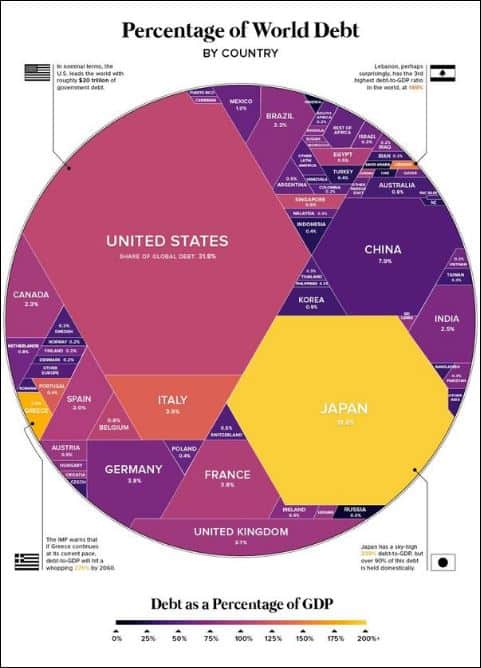The Institute of International Finance (IIF) revealed that the global debt reached an all-time high of $233 trillion (£169 trillion) in the third quarter of 2017. More than three folds since 2016, showing an increase by $16 trillion.
According to the IIF, the greatest chunk of $68 trillion belongs to non-financial companies. The next bigger borrowers are governments across the world with $63 trillion, whereas Financial institutes have $58 trillions of debt.
There is something more in addition, that are the household, with $44 trillion of baggage, quotes Independent.

Origin of debt:
When we put our money in a bank account, the bank loans it out to someone else serving their purpose: and our financial asset becomes someone else’s financial liability.
Debt becomes a wise move only when is taken to improve the productivity and welfare in future. However, when it goes excessive and consumed unwisely, the trouble arises.
About governments:
The allocation of $63 trillion to the governments shows the United States making a good chunk of the sphere with 31.8%. The country has not shown any annual budget surplus since 2001.

According to a report by Visual Capitalist: “Governments borrow this money to cover short-term budget deficits or to finance mission-critical projects. However, around the globe, countries have taken to the idea of running constant deficits as the normal course of business, and too much accumulation of debt is not healthy for countries or the global economy as a whole.”
The United States, Japan, China, Italy, and France are the five countries that hold 66% of the world’s debt with $41.6 trillion of money.

